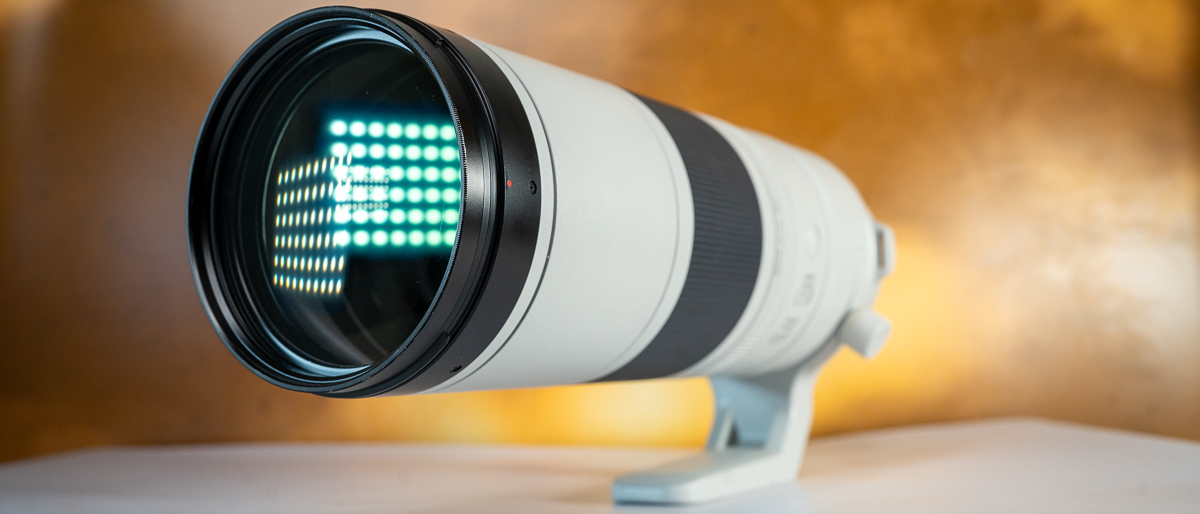Rainbow Album: The Many Colors of the Sun
Cotton Candy Sun
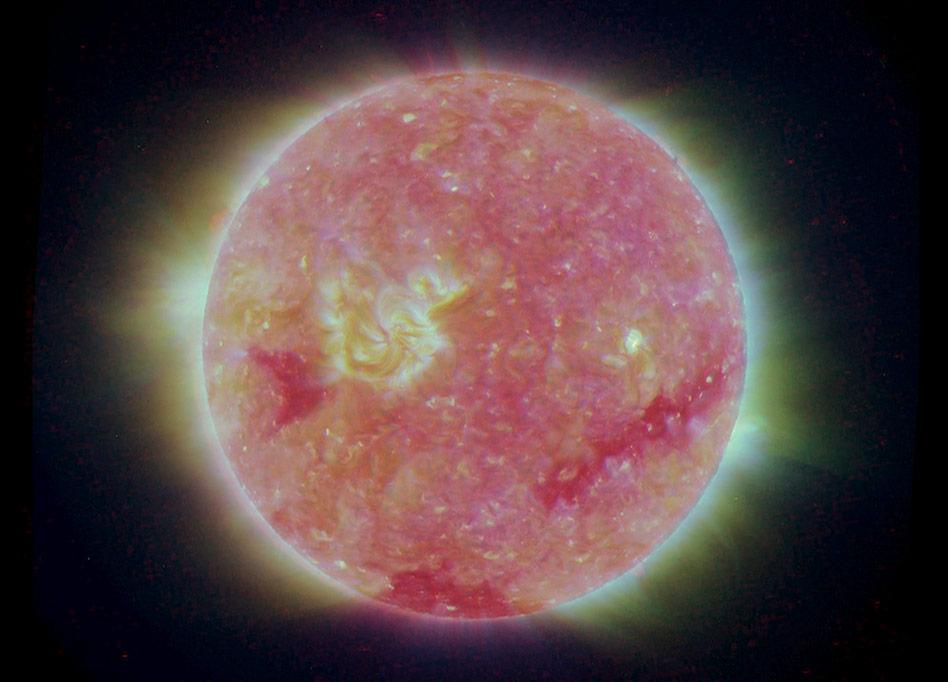
This still combines all of STEREO's wavelengths into one picture. NASA's Solar TErrestrial RElations Observatory (STEREO) satellites have provided the first three-dimensional images of the sun.
Sun Top
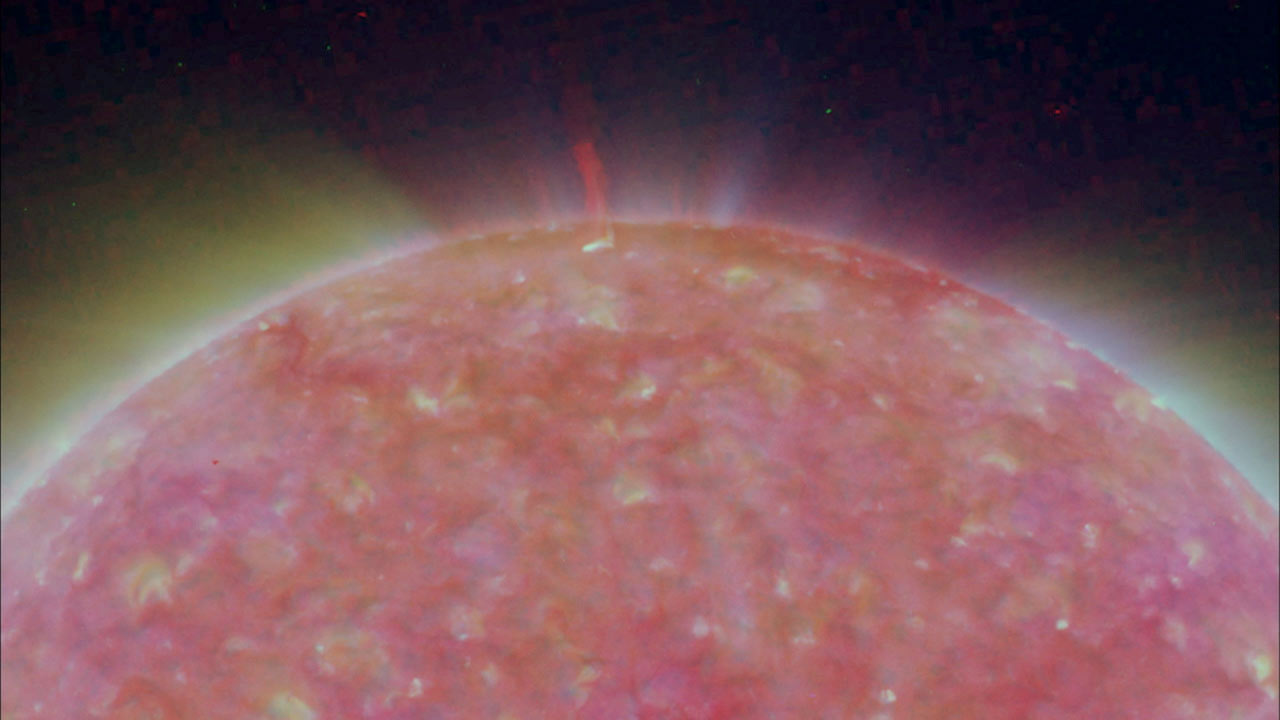
Another still combining all wavelengths from NASA's STEREO satellite reveals the upper part of the sun and its activity. "With STEREO's 3-D imagery, we'll be able to discern where matter and energy flows in the solar atmosphere much more precisely than with the 2-D views available before. This will really help us understand the complex physics going on," said Russell Howard of the Naval Research Laboratory, Washington, the Principal Investigator for the SECCHI (Sun Earth Connection Coronal and Heliospheric Investigation) suite of telescopes on the spacecraft.
Blue Sun
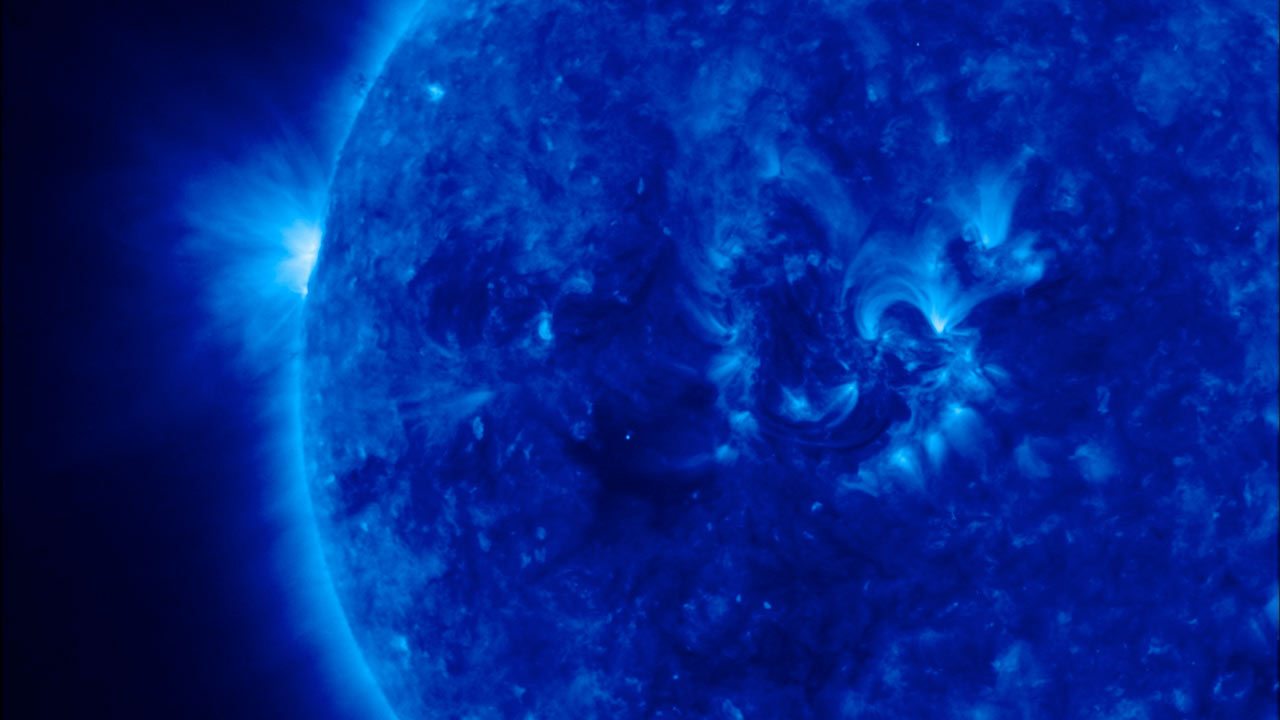
This 2-D false-color image shows the sun's atmosphere at 1.8 million degrees Fahrenheit (1 million degrees Celsius). By looking at different temperatures, scientists can focus on different features of the sun.
Green Sun

This 2-D false-color image shows the sun's atmosphere at 2.7 million degrees Fahrenheit (1.5 million degrees Celsius).
Hint of Red
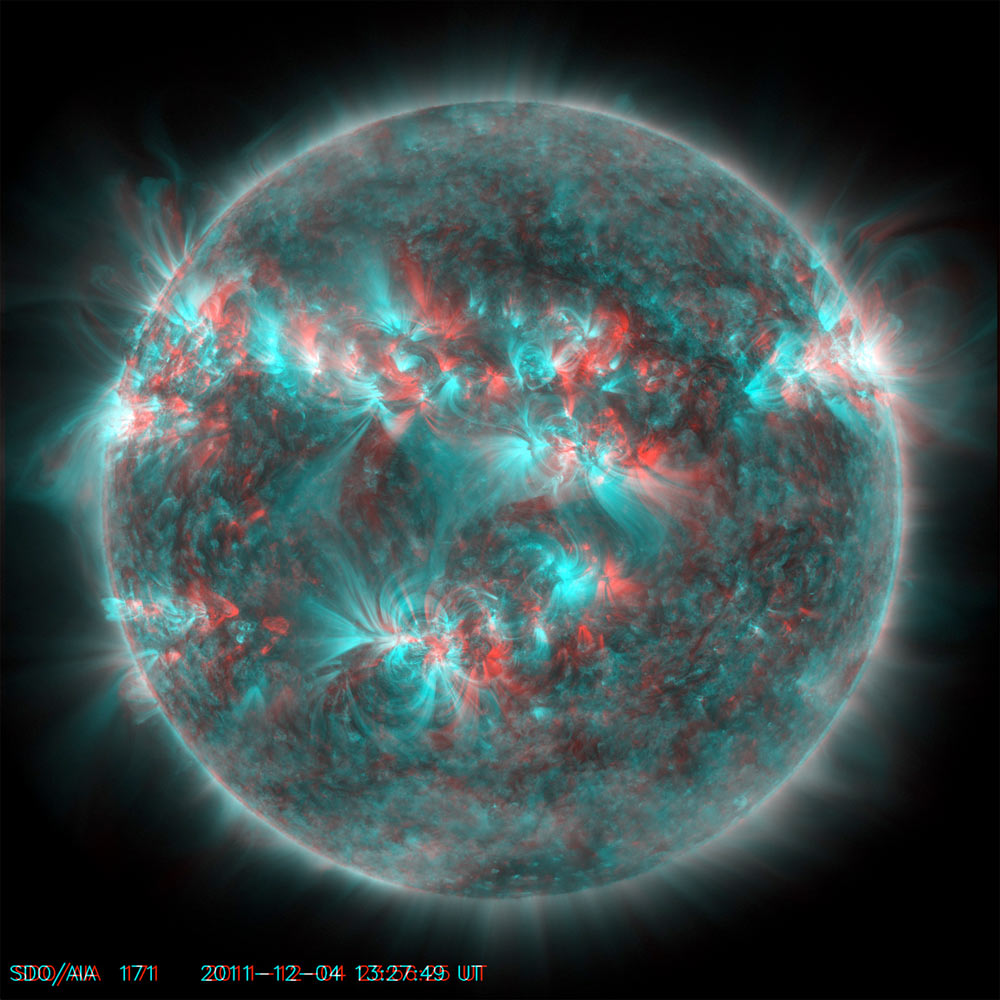
NASA's Solar Dynamics Observatory (SDO) mission created this magical shot from pairs of high-resolution images of the sun taken about eight hours apart on Dec. 4, 2011. Using imaging software, the scientists turned the results into a 3-D sun. The sun appears rounded and the loops above active regions clearly stand out above the sun's surface (as long as you're wearing 3-D glasses).
Purple Sun
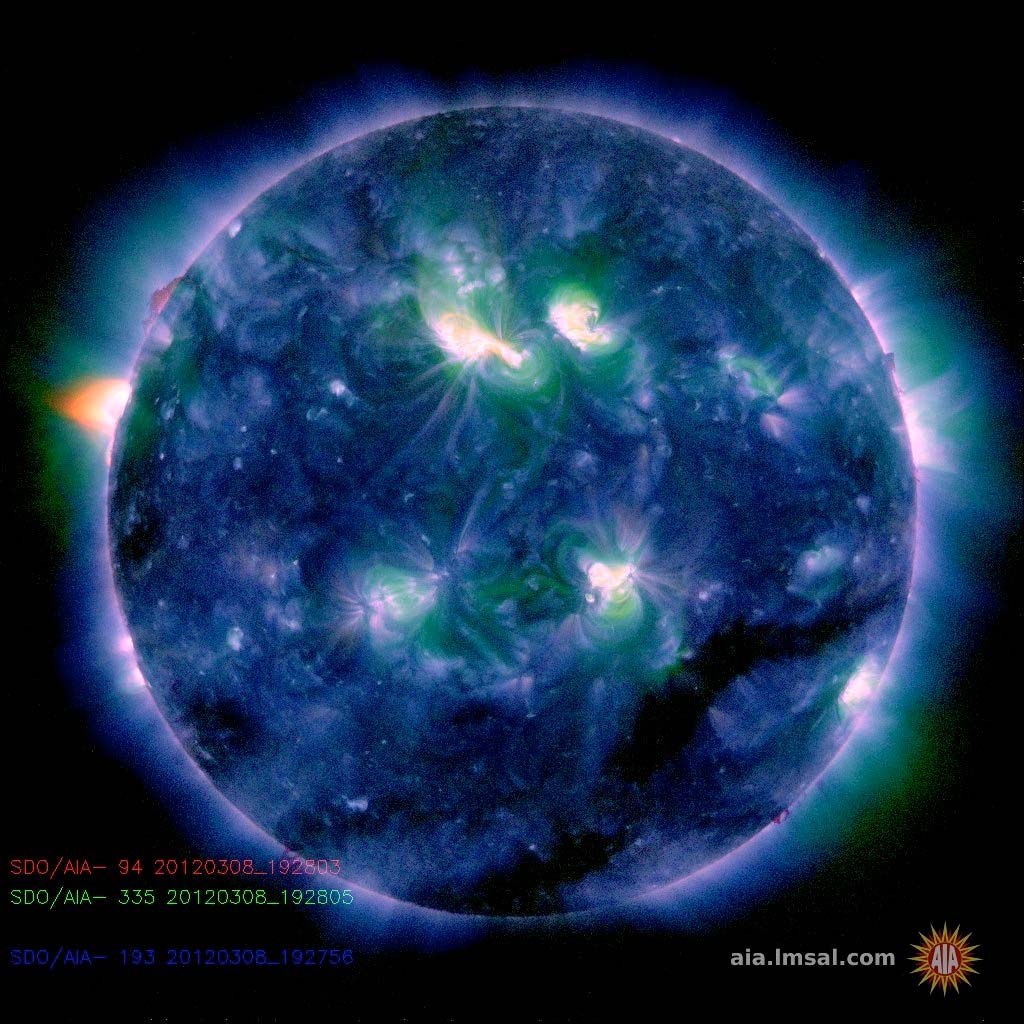
This color-coded image combines observations made by NASA's Solar Dynamics Observatory in several extreme ultraviolet wavelengths, highlighting a bright X-class flare toward the upper left of the sun's disk on March 6, 2012.
Yellow Sun
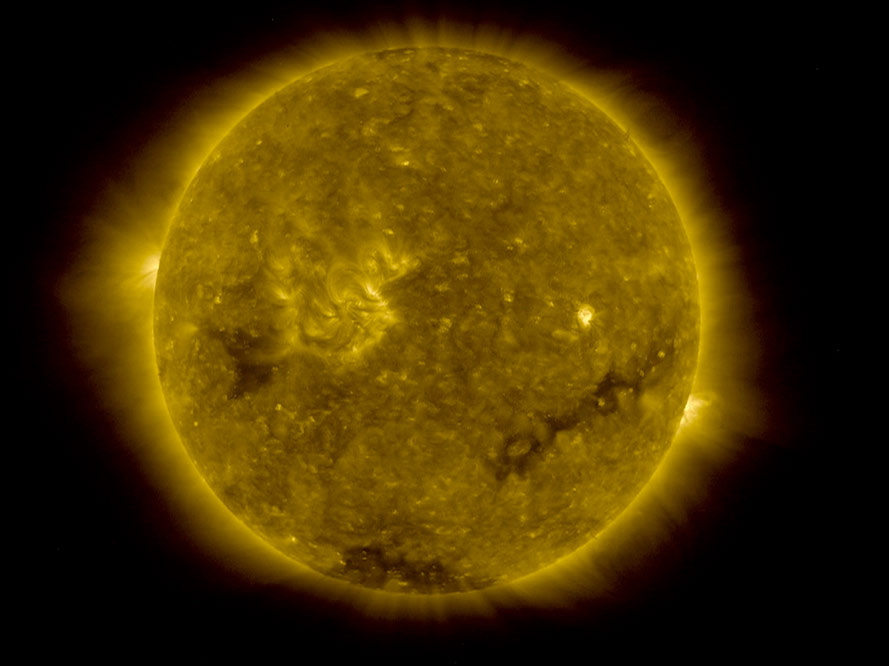
This 2-D false-color image shows the sun's atmosphere at 4.5 million degrees Fahrenheit (2.5 million degrees Celsius).
Get the world’s most fascinating discoveries delivered straight to your inbox.
Green Sun Series
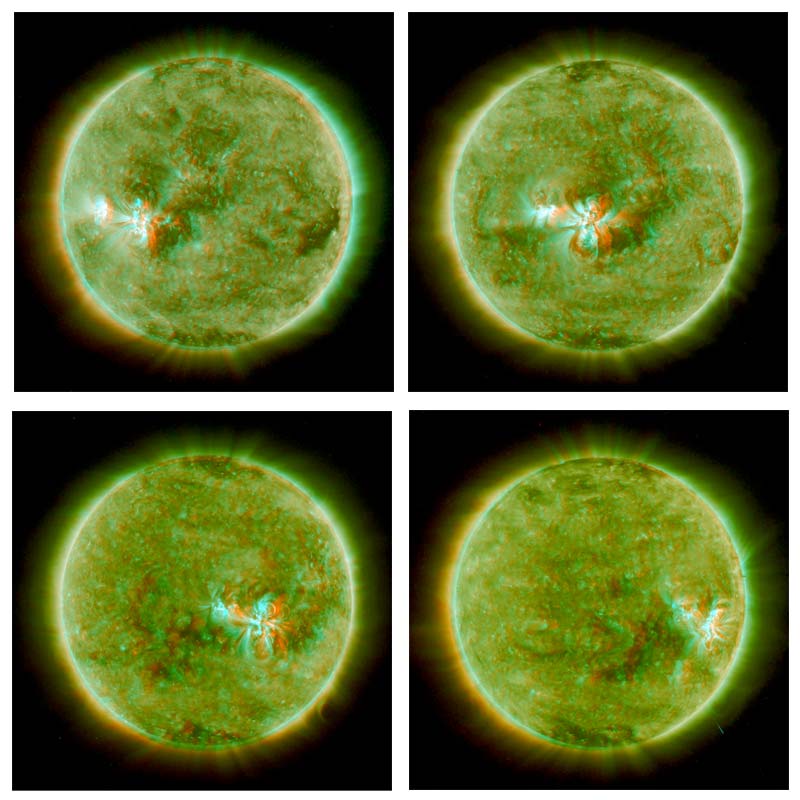
By combining images taken almost simultaneously from the Ahead and Behind STEREO spacecraft, researchers have generated a 3-D sequence of four images (clockwise starting at the top left) that track an active solar region over about a one-week period (April 29 through May 5, 2007). The images were all taken in extreme ultraviolet light. Active regions, which are areas of intense magnetic activity, appear brighter in UV light. The region is seen moving from left to right as the Sun's rotation carries it along. Arcing loops above the active region reveal million-degree Celsius particles spinning along magnetic field lines.
Orange Sun
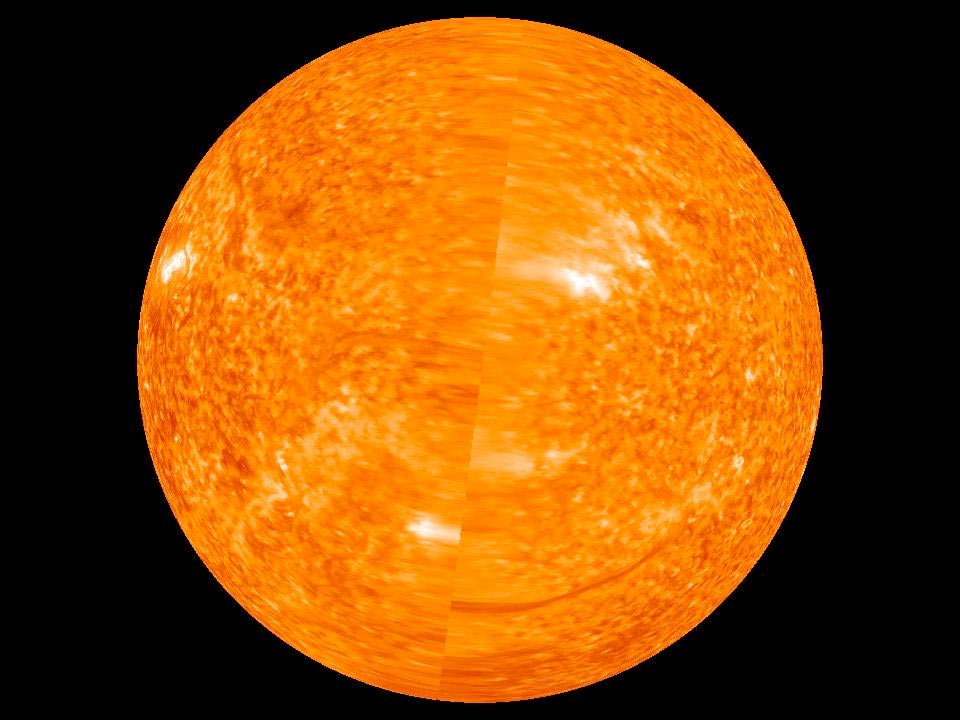
This is the first complete image of the solar far side, the half of the sun invisible from Earth. Captured on June 1, 2011, the composite image was assembled from NASA's two Solar TErrestrial RElations Observatory (STEREO) spacecraft. STEREO-Ahead's data is shown on the left half of image and STEREO-Behind's data on the right.
Pacman Sun

Remind anyone of a favorite arcade game? The new moon passes over the sun in this Feb. 21 image taken by NASA's Solar Dynamics Observatory. The partial eclipse was visible only from space.
The next partial solar eclipse Earthlings will be able to see will occur May 20, with views visible from Asia, the Pacific and western North America.
largest sunspot
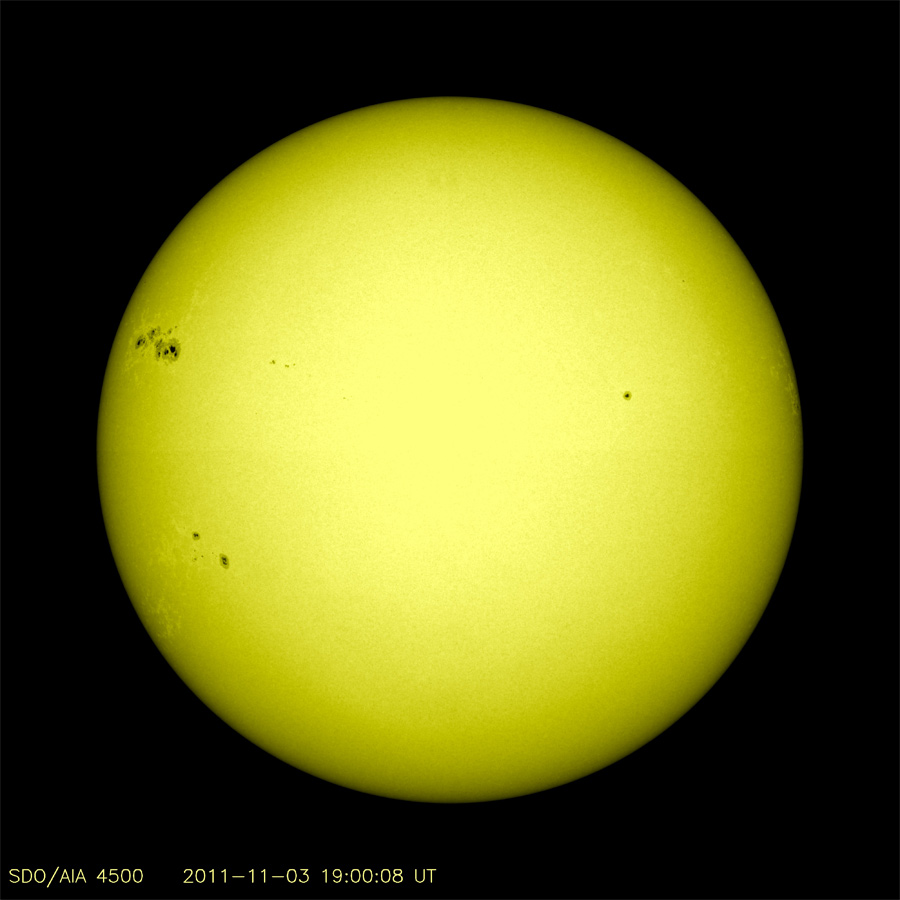
The gigantic sunspot in the upper left of this image is about 50,000 miles (80,000 km) long and was observed on the sun by NASA's Solar Dynamics Observatory on Nov. 3, 2011.
Jeanna Bryner is managing editor of Scientific American. Previously she was editor in chief of Live Science and, prior to that, an editor at Scholastic's Science World magazine. Bryner has an English degree from Salisbury University, a master's degree in biogeochemistry and environmental sciences from the University of Maryland and a graduate science journalism degree from New York University. She has worked as a biologist in Florida, where she monitored wetlands and did field surveys for endangered species, including the gorgeous Florida Scrub Jay. She also received an ocean sciences journalism fellowship from the Woods Hole Oceanographic Institution. She is a firm believer that science is for everyone and that just about everything can be viewed through the lens of science.


